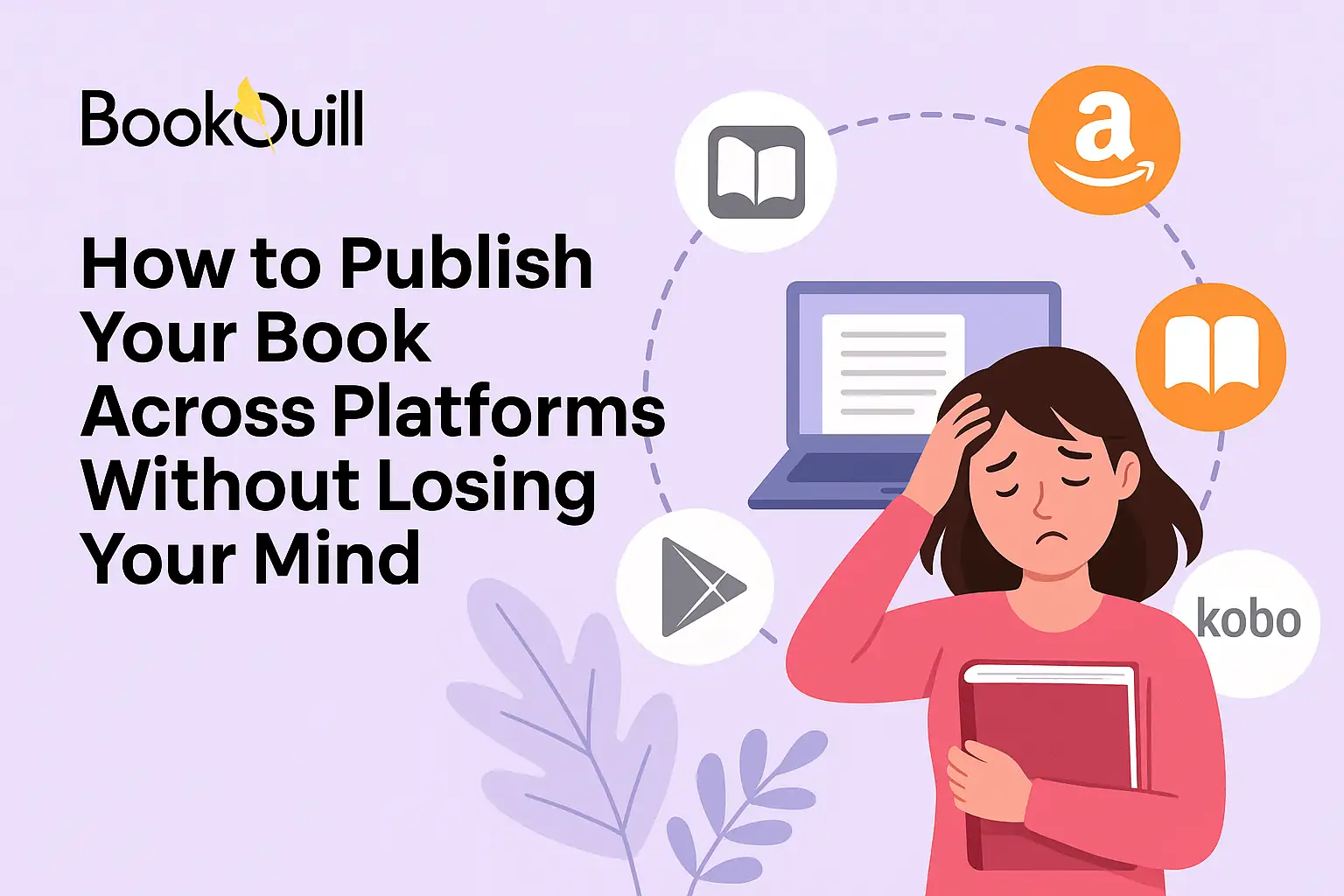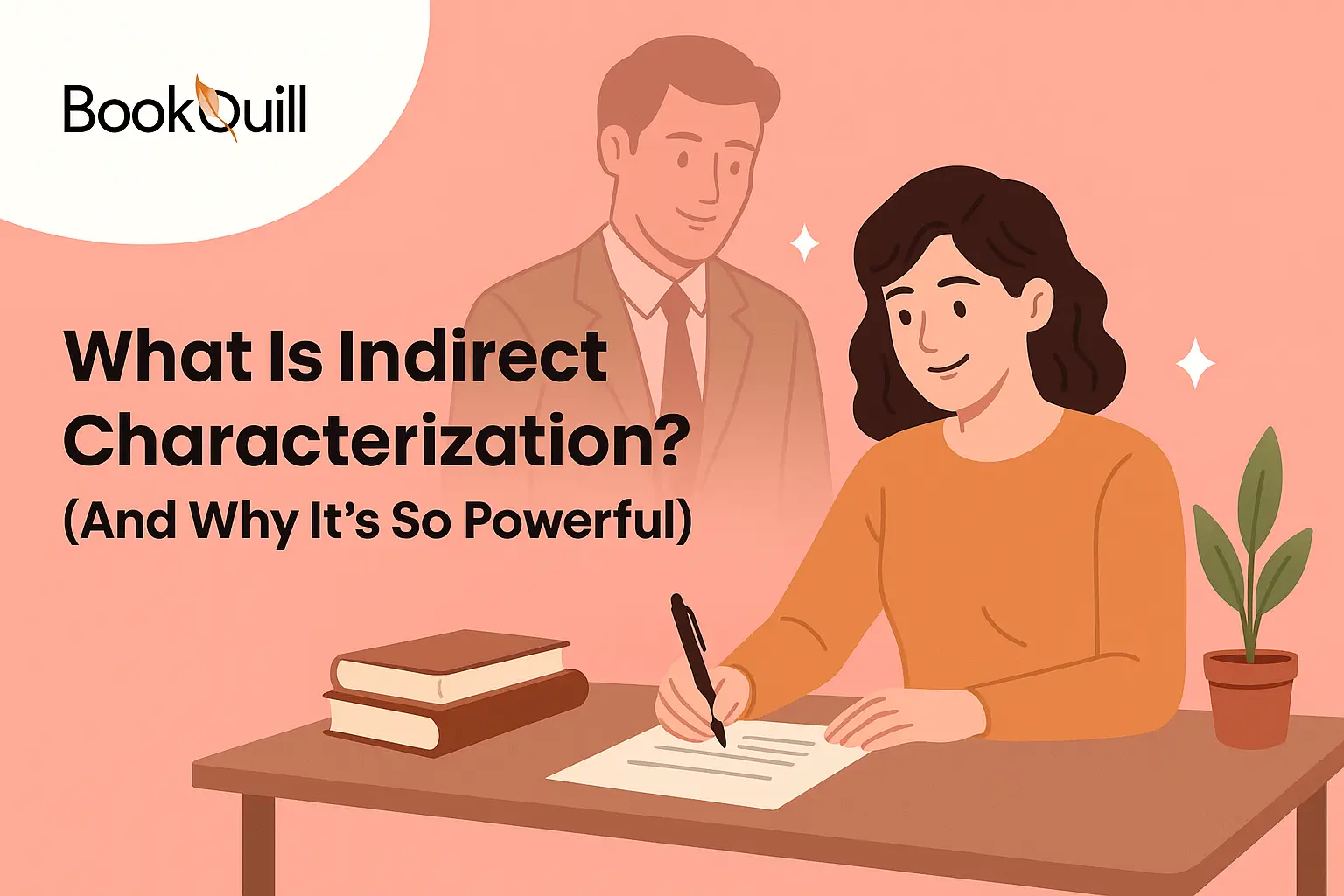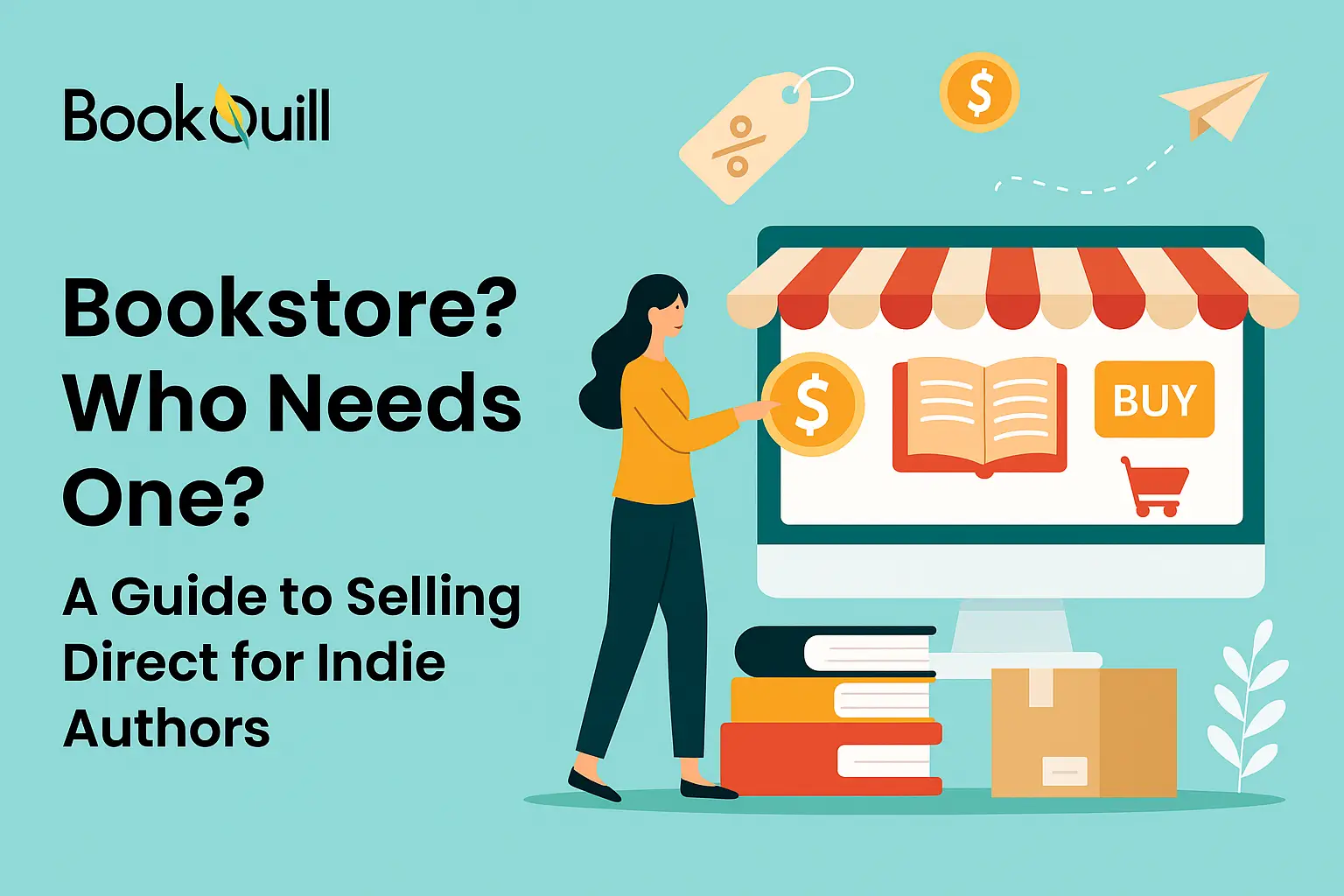Table of Contents
Explore Blogs
Trending on Ebook
How to Publish Your Book Across Platforms Without Losing Your Mind

So, you have finally finished your book. Congratulations! You did it, but now what?
If you are like most new authors, the next thought is, “How do I actually get this thing out into the world?” Well, you can choose to go with platform publishing, the idea that instead of launching your book only on Amazon, you’ll publish it across multiple publishing platforms to reach more readers, sell more copies, and build a global presence.
Sounds easy, right? It is… until you actually try to do it.
Publishing sounds like a dream, until it’s a headache. Why a headache? Because of all the confusing file formats, metadata fields, ISBN rules, and upload portals. Amazon wants one thing! IngramSpark wants another. You feel like you are running customer service for your own book, and it’s only Day 2.
This is the part where authors go from optimism to wide-eyed panic. Not because self-publishing platforms don’t work, it absolutely does, but because nobody warned you how complicated it can get.
And that’s where this blog comes in! We will be discussing which platform actually matters, what you need to publish on each one, and when you should call for help. Moreover, along the way, we’ll also talk about the real perks of working with independent book publishing experts.
So, let’s get started!
Key Takeaways
- Self-publishing platforms: These platforms expand your reach but require a smart and organized approach to avoid overwhelm.
- Every Platform is Different: Each platform has its own quirks, like formatting, metadata, and pricing.
- Usage of Tools: Tools like Draft2Digital, Books2Read, and centralized dashboards can save serious time and stress.
- Hiring Professional Book Publishing Services: Especially for Amazon, ensures your book looks refined and performs well everywhere.
Exclusive or Wide? How Indie Authors Should Choose Their Publishing Path
Suppose you are uploading your book to Amazon Kindle Direct Publishing (KDP), and suddenly, a shiny checkbox appears. It says, “Enroll in KDP Select.” It promises things like access to Kindle Unlimited readers, better royalties in some regions, and promotional perks like Kindle Countdown Deals.
Sounds tempting, right? That’s the exclusive path, and it’s how Amazon baits many indie book publishers into keeping their book only on their platform for 90 days at a time.
But what’s the tradeoff?
If you say “yes” to KDP Select, you can’t sell your book anywhere else, not on Apple Books, not on Google Play, not even on your own website for authors hoping to build a broad audience; that can be a huge limitation.
This is the first major choice in the world of independent book publishing:
- Do you go all-in with Amazon and trust the power of its algorithm?
- Or do you go wide, putting your book on multiple self-publishing platforms like Kobo, Barnes & Noble, Apple Books, IngramSpark, and others?
Why Some Authors Stay Exclusive at First?
- Kindle Unlimited has millions of subscribers, and page reads can generate income.
- Amazon runs roughly 67% of the U.S. eBook market.
- KDP Select promotions can help boost visibility, especially for new authors.
But exclusivity has its limits. It’s like having a great relationship… with someone who doesn’t let you talk to anyone else. Toxic, right?
Why “Going Wide” is Gaining Steam
Wide publishing means going for a long shot. Authors who publish across platforms:
- Build multiple revenue streams.
- Reach international readers that Amazon may overlook.
- Retain more control over pricing and promotions.
- Future-proof their careers from policy changes on one platform.
More importantly, indie book publishers who go wide are building businesses, not just launching books. They are thinking like entrepreneurs.
Of course, managing all these platforms is confusing. That’s why many authors lean on trusted publishing partners like BookQuill, who already speak Apple Books, Kobo, and Amazon fluently.
So, Who’s Running the Publishing Show?
Alright, you’ve made the bold decision to publish widely. That’s great. But now comes the question, “Where exactly should your book live?”
There’s no shortage of self-publishing platforms out there, and not all are created equal. Some specialize in eBooks while others in print. Some are global powerhouses, others are niche players with passionate followings. Let’s break down the major ones you need to know.
1. Amazon KDP (Kindle Direct Publishing)
Honestly, Amazon is the elephant in the publishing room. It dominates the eBook market and is still one of the easiest places to launch. But here’s where it gets tricky, Amazon has different specs for:
- Print vs eBook formatting
- Metadata
- Pricing
And that’s only the beginning. That’s why so many authors hire Amazon book publishing services, not just because they can’t upload a file, but because getting everything right is way harder than it looks.
2. IngramSpark
It’s the premium alternative for distributing your print book broadly. IngramSpark connects to thousands of bookstores, libraries, and retailers worldwide. It’s a favorite among independent book publishing professionals for hardcover options, bookstore visibility, and wholesale discounts.
But the setup? More complex than Amazon. You’ll need:
- Your own ISBNs
- Precision in your metadata and categories
- A keen eye for printing specs
Here’s a tip! Use IngramSpark for wide print distribution, and Amazon KDP for Amazon print. Yes, both.
3. Draft2Digital
These are aggregators, meaning they distribute your eBook to multiple platforms (Apple Books, Kobo, Barnes & Noble, and more) from one dashboard. They’re perfect for authors who want to go wide without managing a dozen logins.
Draft2Digital now owns Smashwords, bringing together two of the most author-friendly eBook distribution tools.
4. Apple Books
A significant update for the iOS community. Especially popular in the U.S., UK, and Australia. Apple Books is selective about formatting and metadata. It rewards refinement and punishes sloppiness. Pro help here can go a long way.
5. Google Play Books
A powerful but often overlooked platform. Known for indexing eBooks for SEO visibility, so your book can rank on Google. But it has quirks, especially with pricing and discounting mechanics. This is where many authors stumble without professional guidance.
6. Kobo
It is big in Canada and strong in Europe and Asia. Kobo readers are loyal, and the company partners with indie-friendly platforms like Kobo Writing Life and OverDrive.
7. Barnes & Noble Press
Often dismissed, but still worth considering. Especially if you want your book in actual Barnes & Noble stores, though you will need strong sales and presentation for that.
We know you are confused, and honestly, trying to publish on all of these at once can feel like applying for college in six countries while learning six languages. That’s why many authors offload the heavy lifting, particularly for Amazon, by working with specialists offering the best Amazon eBook publishing service or full-scale eBook publishing services.
File Formatting Without Tears or Exploding EPUBs
Now let’s talk about one of the most underestimated parts of self-publishing, i.e., formatting. What makes it even more of a headache is that different self-publishing platforms want different file types.
- Amazon KDP wants reflowable EPUBs for eBooks and print-ready PDFs for paperbacks.
- IngramSpark? Same deal, but more picky.
- Google Play Books accepts EPUBs but handles pricing and metadata differently.
- Apple Books prefers polished EPUBs with embedded fonts and stylish formatting.
- And if you’re using an aggregator like Draft2Digital, they’ll convert for you, but only if your raw manuscript is clean.
So, this means you can’t just copy-paste a Word file and hope for the best. Well, still, if you try to, things are going to get more messed up, like:
- Line breaks that mysteriously vanish on Kindle
- Fonts that revert to Times New Roman on Apple Books
- Page numbers floating
- Random scene breaks showing up as… emojis?
How do you avoid these formatting meltdowns? With formatting tools! Like Atticus, Vellum, Reedsy, and Calibre. But remember, even with these tools, formatting mistakes happen. That’s why many authors opt to hire Amazon eBook publishing services or work with professionals who know Amazon’s peculiarities and can format your book correctly the first time.
And let’s not forget about print formatting, where margins matter, spines get calculated, and every trim size counts. If you’re publishing a paperback through Amazon or IngramSpark, you’ll need:
- A correctly sized PDF interior file
- A high-res and wraparound cover file with exact dimensions
- ISBN placement, barcode setup, and margin compliance
Even experienced authors often hand this part off, especially when they’re using the best Amazon print-on-demand service to handle high-quality paperbacks that don’t end up looking like something you printed in your basement.
Yes, it’s possible to handle it all solo. But when deadlines are tight and excellence matters, professionals can save you more than just time.
The Metadata Mistake That Could Be Killing Your Sales
You could have written the best masterpiece, but if your metadata is a mess, it’s not. Metadata is basically everything about your book that isn’t the book itself. That includes:
- Title and subtitle
- Author name
- Description
- Keywords
- BISAC categories
- ISBN
- Series name and volume number
- Language, publication date, and more
This data tells platforms where to shelve your book, what readers it’s for, and whether to show it to someone searching “romantic suspense with ghosts” or “productivity hacks for side hustlers.”
What makes it even trickier is that no two platforms work the same.
- Amazon gives you seven keyword slots, but you can include multi-word phrases, which makes the game interesting.
- IngramSpark uses a different BISAC system and doesn’t allow the same creative liberties in descriptions.
- Apple Books and Google Play also have character limits, formatting rules, and word sensitivity filters.
The result? Formatting and metadata puzzle authors must solve differently for each platform while somehow keeping everything consistent.
Why It Matters and Hurts When It Goes Wrong
- Wrong categories? You might be buried under unrelated books.
- Weak keywords? You’ll miss readers who are actively searching for what you wrote.
- Inconsistent titles or ISBNs? Platforms may think your print and eBook are two different books and split reviews.
- Unformatted descriptions? You look like an amateur, even if your writing is award-worthy.
- And perhaps worst of all? You might rank well on Amazon… but not show up at all on Apple or Kobo.
That’s why hiring Amazon book publishing services is about making sure you’re optimized in the eyes of the algorithm. With the best publishing service, you are not guessing which keywords work, but you are getting data-backed choices that align with market trends.
One Book, Too Many Stores, Too Much Hassle
Now that your manuscript is refined and your metadata is glimmering with keyword precision, it’s time to upload your book across the self-publishing platforms you have chosen. Sure, it sounds easy.
But that’s how it gets you!
What nobody tells you is that platform publishing isn’t a one-and-done kind of deal. It’s a platform-by-platform and click-by-click grind. Each site has its own interface, file requirements, cover size specs, metadata forms, and pricing calculators. This means that even if you have already uploaded your book to Amazon, you’re going to do it again for IngramSpark. again for Google Play. And again for Kobo. And again for Apple.
Here’s what you’ll need to upload… every. Single. Time.
- Final EPUB and/or PDF files
- Cover image(s) in exact dimensions
- ISBN
- Book description
- Author bio
- Pricing per region
- Keywords, tags, categories
- Series information
And remember, different platforms handle updates differently. So, do you realize there’s a typo on Page 2 after going live? Congrats, now enjoy uploading the same book five more times, with five different sets of rules.
This is why even authors who use the top 10 self-publishing companies can get overwhelmed. Mistakes happen when you are juggling half a dozen dashboards and trying to remember which version of your cover has the fixed barcode.
Smart Pricing Strategies
Now, let’s talk money!
You worked for months in writing, editing, formatting, and uploading your book, so you shouldn’t be earning pennies just because you missed one price setting. And yet, that’s exactly what happens when authors underestimate the complexities of pricing across self-publishing platforms.
Every platform has its own royalty structure, territory breakdown, and pricing requirements. What’s worse? Some automatically convert your U.S. price into foreign currencies… often very poorly.
Now, How to Save Your Sanity?
We know that’s a lot to take, but that’s where smart indie book publishers create what we call a “Publishing Command Center,” a central hub (in Notion, Trello, or even Google Sheets) to track:
- ISBNs per format and platform
- Upload dates
- Pricing per country
- Metadata details
- Royalty earnings per month
- Promotion history
Alternatively? Use royalty aggregators like:
- BookReport (for Amazon) turns Amazon’s .txt earnings files into beautiful charts.
- PublishDrive lets you track and manage wide sales in one place.
- Draft2Digital’s dashboard offers consolidated reports for Kobo, Apple Books, etc.
But even with these tools, most authors hit a point where they ask themselves: “Is this really the best use of my time?”
That’s why those serious about scaling or saving time often turn to professionals. With the right publishing support, you don’t have to:
- Log into seven dashboards every month
- Re-upload a corrected file six times
- Play email ping-pong with Apple over an ISBN error
Instead, you can write. Or promote. Or just… breathe.
When you are working with experts who know the ins and outs of platform publishing, it’s not just about making fewer mistakes; it’s about making more money with fewer headaches.
Final Thoughts
Publishing your book across multiple platforms is one of the best decisions you can make as an indie author, but also one of the most overwhelming. It promises more reach, more revenue streams, and more control over your writing career… and yet somehow comes with more dashboards, decisions, and headaches than anyone signs up for.
But here’s the good news! You don’t have to choose between being everywhere and being okay.
Platform publishing doesn’t have to be chaotic. It can be strategic, streamlined, and even enjoyable when you take the right approach:
- Choose platforms that actually make sense for your goals.
- Get your files and metadata organized up front.
- Use the tools (and people) that lighten your load instead of adding to it.
- And when in doubt? Don’t wing it, bring in the experts!
Whether you’re dreaming of a global launch or just want to make sure your Amazon page looks like it was built by someone who knows what they’re doing, partnering with us can change everything especially if you’re looking to hire Amazon book publishing services to get your book in front of the right readers, in the right way.
Frequently Asked Questions
What Is Platform Publishing And Why Should I Consider It?
It means distributing your book across multiple self-publishing platforms like Amazon, Apple Books, and IngramSpark. It’s a smart strategy for publishers who want to grow their reach and revenue beyond a single marketplace.
Is It Better to Publish Exclusively With Amazon or Go Wide?
Exclusive publishing through KDP Select may offer short-term perks, but independent book publishing across platforms gives you long-term control and global visibility, especially when backed by professionals.
How Do I Keep My EBook And Print Formatting Consistent Across Platforms?
Each platform has different file and formatting requirements. Working with the professionals or using pro tools like Vellum or Atticus helps maintain quality and avoid costly errors.
What’s the Biggest Challenge of Publishing on Multiple Platforms?
Managing multiple logins, metadata formats, and royalty dashboards can be overwhelming. Many authors choose to hire publishing services or work with the top 10 self-publishing companies to streamline the process.
About Author
Hi, my name is Zachary Stone I’m a book marketing nut — or, as I like to call myself, a “Shelf Marketer.” No, I don’t sell wooden shelves; I market the books that are left forgotten on them. If you want your book to be the next bestseller, I am your go-to person. I am here to remind you that it’s not just about writing a great story — it’s about building a buzz among people with great campaigns.











